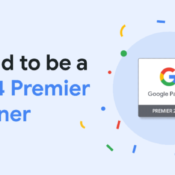/
/
Guest Blogger | How to get past the Spam filter and into readers’ minds: Part I
Whitney Free Bakula | Creative Assistant
If you’ve ever worked on or sent an email blast, you know the feeling of wondering how many of the recipients actually read the email. But what have you done about it? How do you know if your content or even your subject line got anyone to pay attention or, even more importantly, do something with the information?
 I’ve compiled some guidelines from several useful documents a co-worker pointed out to me via MailChimp – a great resource for email marketing. Here are five general guidelines to consider before sending out your next big email.
1. The first and most important rule you can follow is not to send anything to someone who did not give you permission to email them. Whether it gets filtered into their spam folder or not, unwanted email is spam. And if they click to report it as such, you’re inching your way toward a black list you can’t escape.
2. To make readers more trusting of you, avoid deceptive subject lines, reply-to addresses and content in general. Validate your existence with readers by always giving your physical address, phone number, and even the name of a specific employee when appropriate.
3. To avoid spamming your audience, use a double opt-in method whenever possible. This means users sign up, usually at your website, and then get an email with a confirmation link to make sure they really did ask to get your emails. Don’t use purchased lists of email addresses, no matter the source. It’s not good practice and it makes you a spammer. Also avoid scraping addresses off websites just to beef up your list – these are the ones like “info@dontemailme.com” and “webmaster@itsannoying.com.”
4. Think of your e-marketing more as a “relationship” than a “blast.” Who wants to be “blasted” anyway? I hate wasting my time and clicks on junk mail. Personalize your content with variable information so it feels more unique to the reader and is less likely to get pushed to the spam folder.
5. Always include an “unsubscribe” link that is active for at least 30 days after sending so readers have a way out if they so choose. If you don’t give them a way out, they will complain to the powers that be who can keep you from ever sending such an email again. On a related note, clean out your list of addresses regularly so you don’t pester people who’ll likely never connect with you again.
All this advice may seem overwhelming and make email marketing sound difficult, but it’s really pretty simple when you boil it down like this: Only send simple, useful emails to people who want them. Don’t fill strangers’ inboxes with junk just to be able to say you use this form of marketing – you’ll be wasting your time and theirs.
Prepare Yourself… Next week we’ll delve deeper into best practices with email content and design!
I’ve compiled some guidelines from several useful documents a co-worker pointed out to me via MailChimp – a great resource for email marketing. Here are five general guidelines to consider before sending out your next big email.
1. The first and most important rule you can follow is not to send anything to someone who did not give you permission to email them. Whether it gets filtered into their spam folder or not, unwanted email is spam. And if they click to report it as such, you’re inching your way toward a black list you can’t escape.
2. To make readers more trusting of you, avoid deceptive subject lines, reply-to addresses and content in general. Validate your existence with readers by always giving your physical address, phone number, and even the name of a specific employee when appropriate.
3. To avoid spamming your audience, use a double opt-in method whenever possible. This means users sign up, usually at your website, and then get an email with a confirmation link to make sure they really did ask to get your emails. Don’t use purchased lists of email addresses, no matter the source. It’s not good practice and it makes you a spammer. Also avoid scraping addresses off websites just to beef up your list – these are the ones like “info@dontemailme.com” and “webmaster@itsannoying.com.”
4. Think of your e-marketing more as a “relationship” than a “blast.” Who wants to be “blasted” anyway? I hate wasting my time and clicks on junk mail. Personalize your content with variable information so it feels more unique to the reader and is less likely to get pushed to the spam folder.
5. Always include an “unsubscribe” link that is active for at least 30 days after sending so readers have a way out if they so choose. If you don’t give them a way out, they will complain to the powers that be who can keep you from ever sending such an email again. On a related note, clean out your list of addresses regularly so you don’t pester people who’ll likely never connect with you again.
All this advice may seem overwhelming and make email marketing sound difficult, but it’s really pretty simple when you boil it down like this: Only send simple, useful emails to people who want them. Don’t fill strangers’ inboxes with junk just to be able to say you use this form of marketing – you’ll be wasting your time and theirs.
Prepare Yourself… Next week we’ll delve deeper into best practices with email content and design!
 I’ve compiled some guidelines from several useful documents a co-worker pointed out to me via MailChimp – a great resource for email marketing. Here are five general guidelines to consider before sending out your next big email.
1. The first and most important rule you can follow is not to send anything to someone who did not give you permission to email them. Whether it gets filtered into their spam folder or not, unwanted email is spam. And if they click to report it as such, you’re inching your way toward a black list you can’t escape.
2. To make readers more trusting of you, avoid deceptive subject lines, reply-to addresses and content in general. Validate your existence with readers by always giving your physical address, phone number, and even the name of a specific employee when appropriate.
3. To avoid spamming your audience, use a double opt-in method whenever possible. This means users sign up, usually at your website, and then get an email with a confirmation link to make sure they really did ask to get your emails. Don’t use purchased lists of email addresses, no matter the source. It’s not good practice and it makes you a spammer. Also avoid scraping addresses off websites just to beef up your list – these are the ones like “info@dontemailme.com” and “webmaster@itsannoying.com.”
4. Think of your e-marketing more as a “relationship” than a “blast.” Who wants to be “blasted” anyway? I hate wasting my time and clicks on junk mail. Personalize your content with variable information so it feels more unique to the reader and is less likely to get pushed to the spam folder.
5. Always include an “unsubscribe” link that is active for at least 30 days after sending so readers have a way out if they so choose. If you don’t give them a way out, they will complain to the powers that be who can keep you from ever sending such an email again. On a related note, clean out your list of addresses regularly so you don’t pester people who’ll likely never connect with you again.
All this advice may seem overwhelming and make email marketing sound difficult, but it’s really pretty simple when you boil it down like this: Only send simple, useful emails to people who want them. Don’t fill strangers’ inboxes with junk just to be able to say you use this form of marketing – you’ll be wasting your time and theirs.
Prepare Yourself… Next week we’ll delve deeper into best practices with email content and design!
I’ve compiled some guidelines from several useful documents a co-worker pointed out to me via MailChimp – a great resource for email marketing. Here are five general guidelines to consider before sending out your next big email.
1. The first and most important rule you can follow is not to send anything to someone who did not give you permission to email them. Whether it gets filtered into their spam folder or not, unwanted email is spam. And if they click to report it as such, you’re inching your way toward a black list you can’t escape.
2. To make readers more trusting of you, avoid deceptive subject lines, reply-to addresses and content in general. Validate your existence with readers by always giving your physical address, phone number, and even the name of a specific employee when appropriate.
3. To avoid spamming your audience, use a double opt-in method whenever possible. This means users sign up, usually at your website, and then get an email with a confirmation link to make sure they really did ask to get your emails. Don’t use purchased lists of email addresses, no matter the source. It’s not good practice and it makes you a spammer. Also avoid scraping addresses off websites just to beef up your list – these are the ones like “info@dontemailme.com” and “webmaster@itsannoying.com.”
4. Think of your e-marketing more as a “relationship” than a “blast.” Who wants to be “blasted” anyway? I hate wasting my time and clicks on junk mail. Personalize your content with variable information so it feels more unique to the reader and is less likely to get pushed to the spam folder.
5. Always include an “unsubscribe” link that is active for at least 30 days after sending so readers have a way out if they so choose. If you don’t give them a way out, they will complain to the powers that be who can keep you from ever sending such an email again. On a related note, clean out your list of addresses regularly so you don’t pester people who’ll likely never connect with you again.
All this advice may seem overwhelming and make email marketing sound difficult, but it’s really pretty simple when you boil it down like this: Only send simple, useful emails to people who want them. Don’t fill strangers’ inboxes with junk just to be able to say you use this form of marketing – you’ll be wasting your time and theirs.
Prepare Yourself… Next week we’ll delve deeper into best practices with email content and design! Recent Posts
Mudd Advertising
Let’s leverage!
Mudd Advertising
Politics Schmolitics!
Mudd Advertising
Mudd has been promoted to Google Premier Partner
All Categories
Tags
anonymous website visitor identification
automotive
branding
cable
case study
chevrolet
chevy
data
digital marketing
direct marketing
display
dynamic inventory display
facebook
first party
google
google analytics
google premier partner
internet marketing
local seo
Matthew Moody
media
mobile search
mobile seo
MUDDid
online marketing
online video
organic
organic search
pay per click
political
ppc
promotion
retargeting
search engine marketing
search engine optimization
sem
seo
social advertising
social media
social media marketing
strategy
traditional marketing
traditional media
Volunteer Spotlight
youtube




